H Bio Unit 5
4.0(4)
Card Sorting
1/56
Study Analytics
Name | Mastery | Learn | Test | Matching | Spaced |
|---|
No study sessions yet.
57 Terms
1
New cards

cuticle
waxy layer for protection

2
New cards
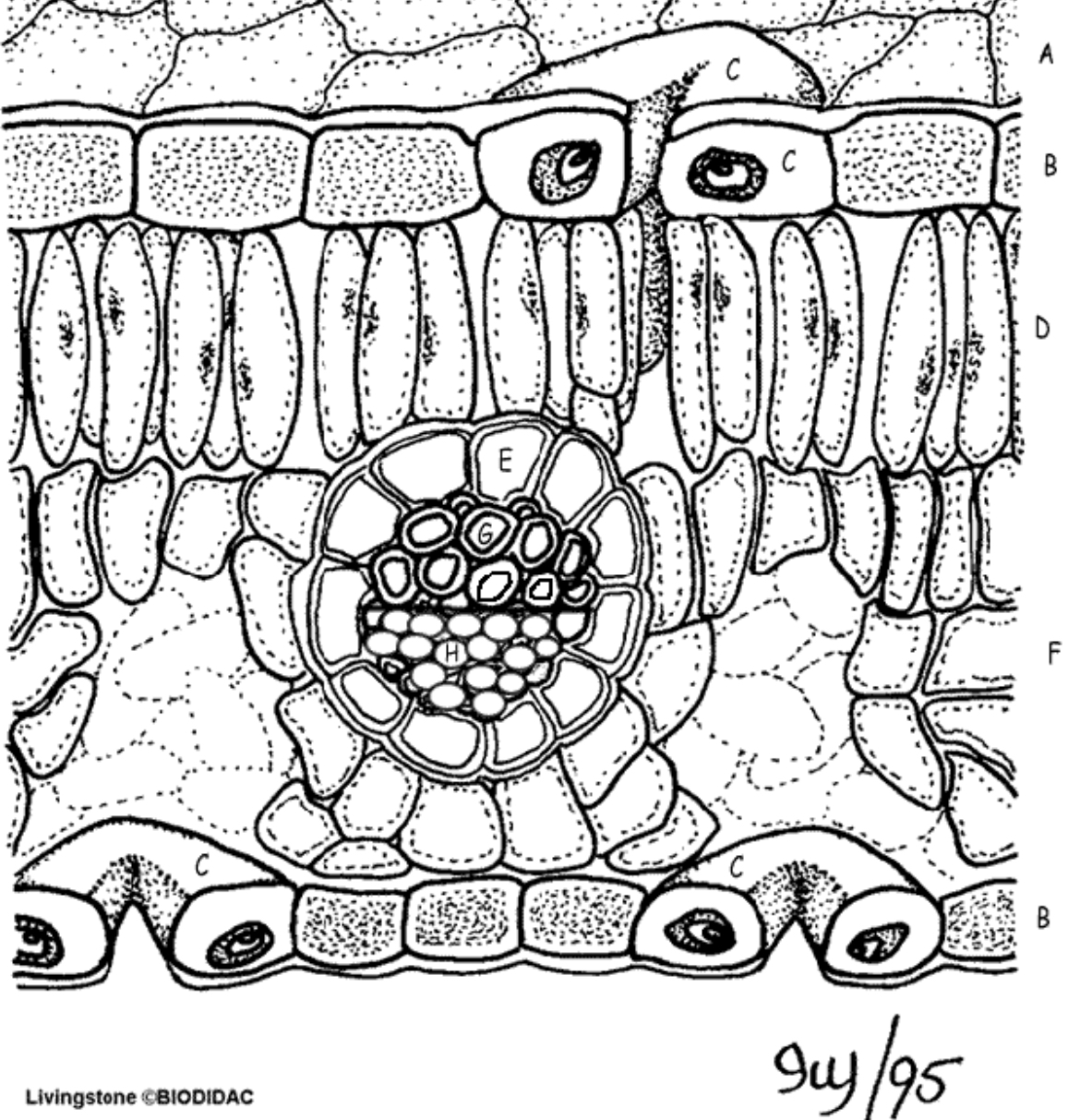
xylem
transports water, hollow, top half of vein, water from roots being pulled up,
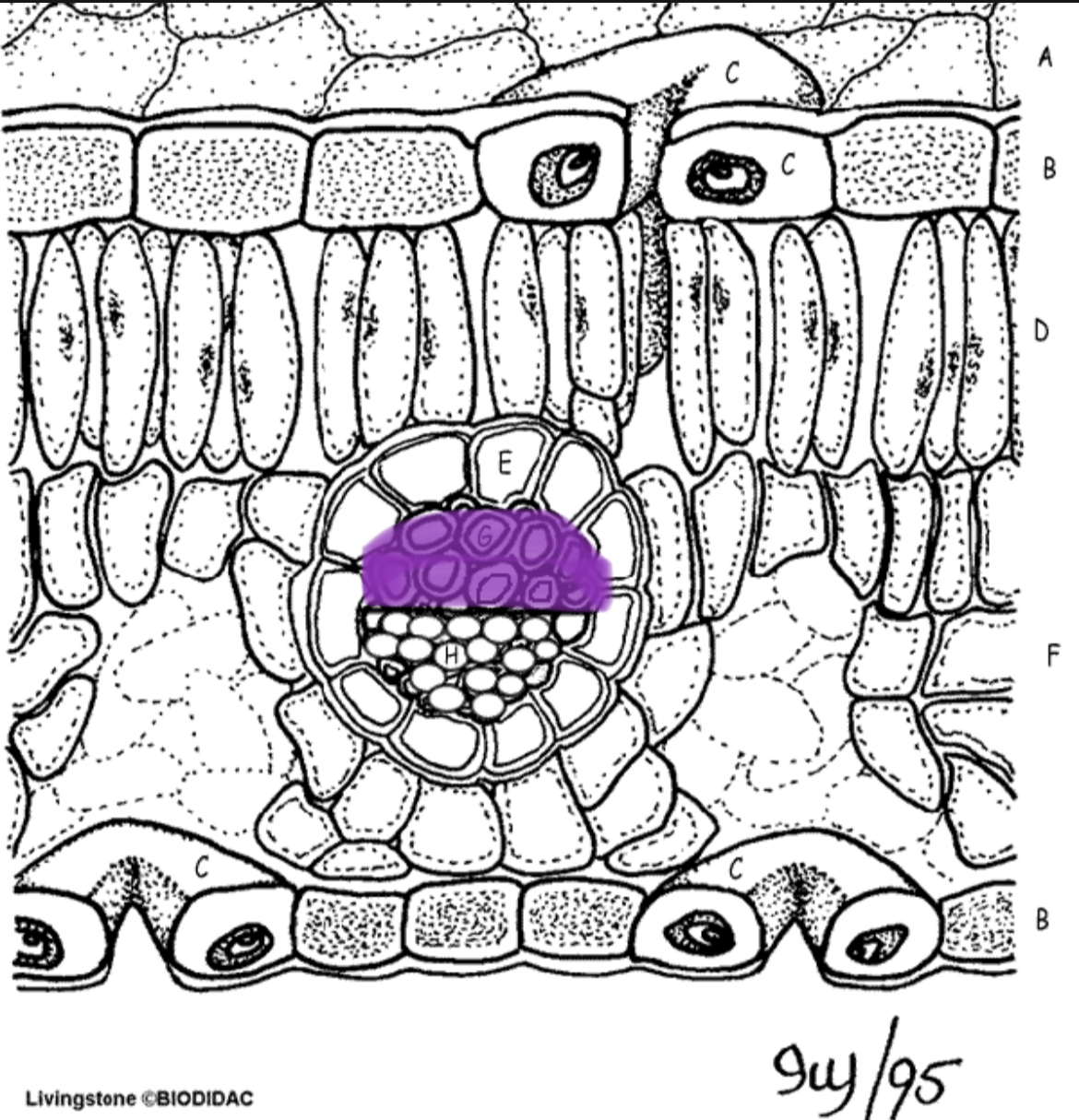
3
New cards
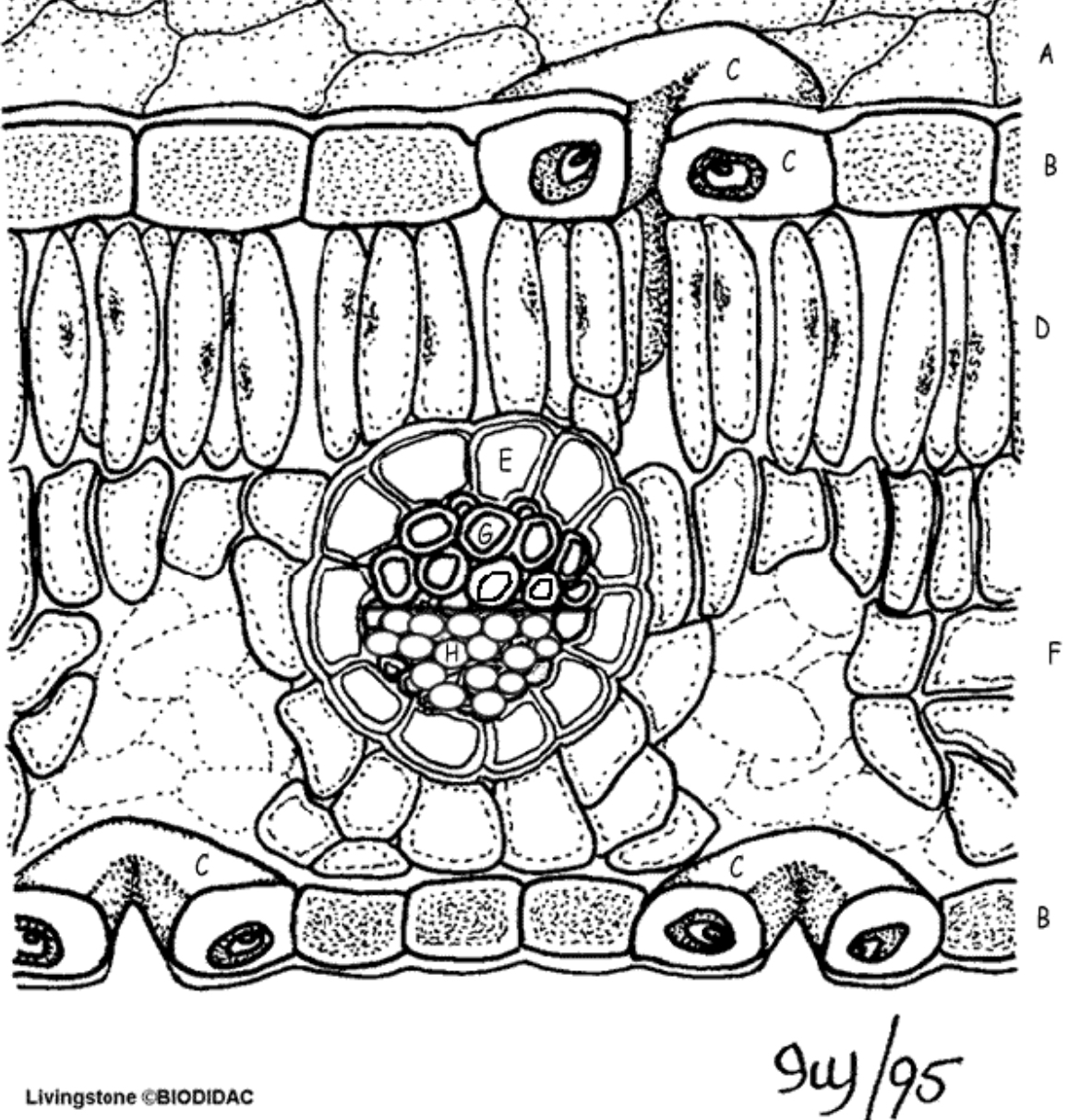
palisade mesophyll
has chlorplasts inside, tall column like cells, where most photosynthesis takes place
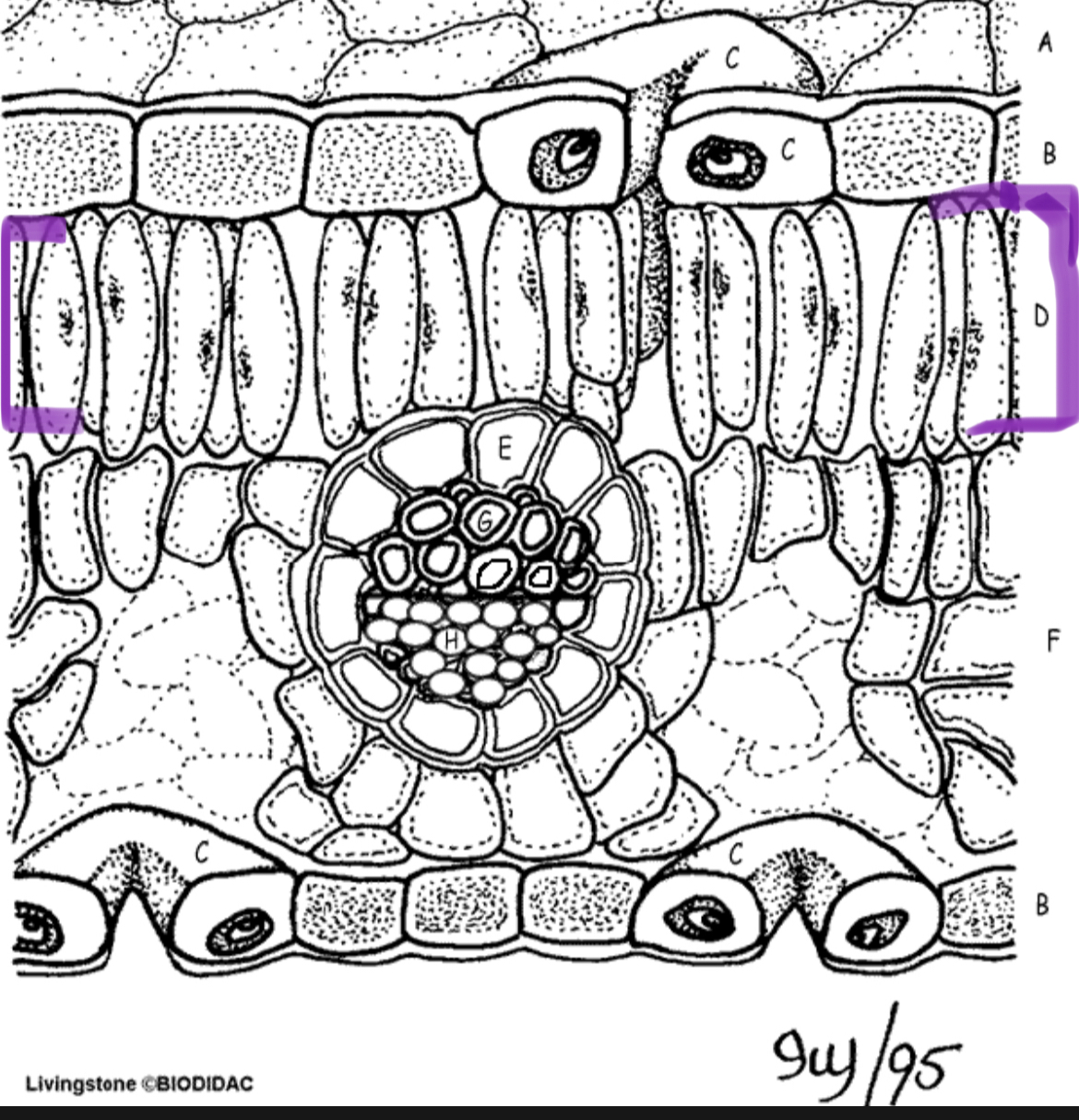
4
New cards
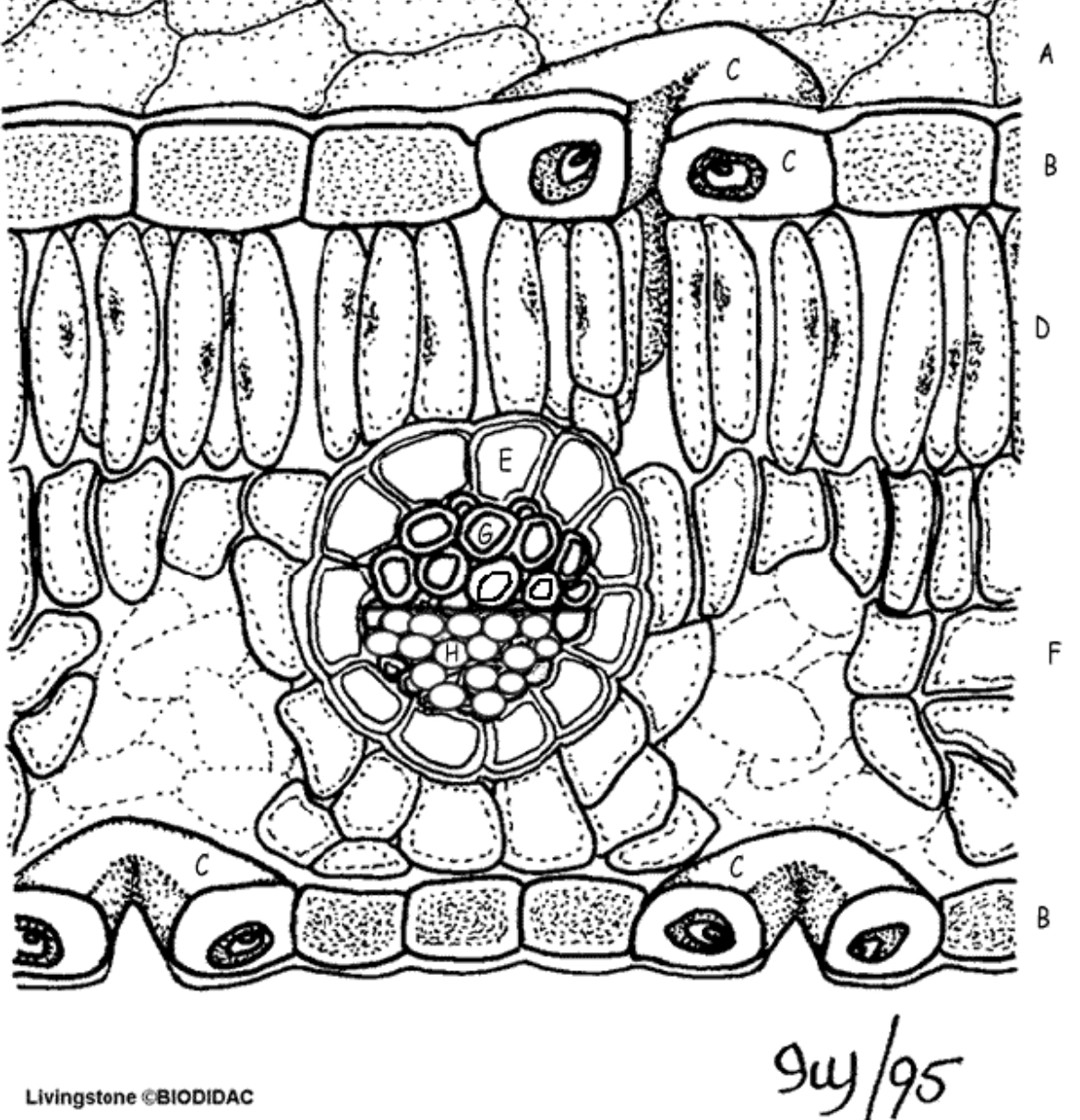
spongy mesophyll
Later for gas exchange, still some photosynthesis, chlorplats inside

5
New cards
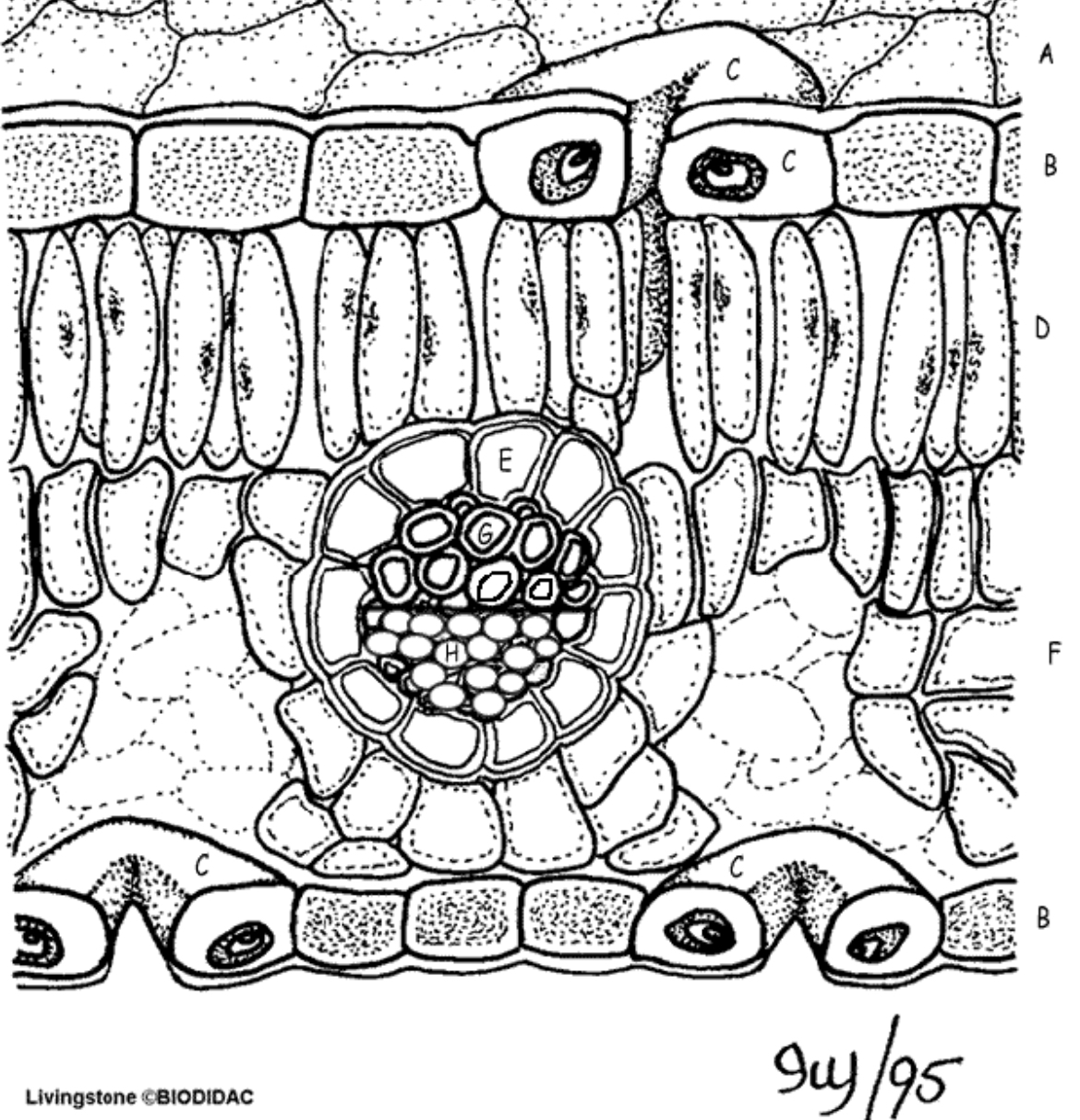
guard cells
open and close stoma
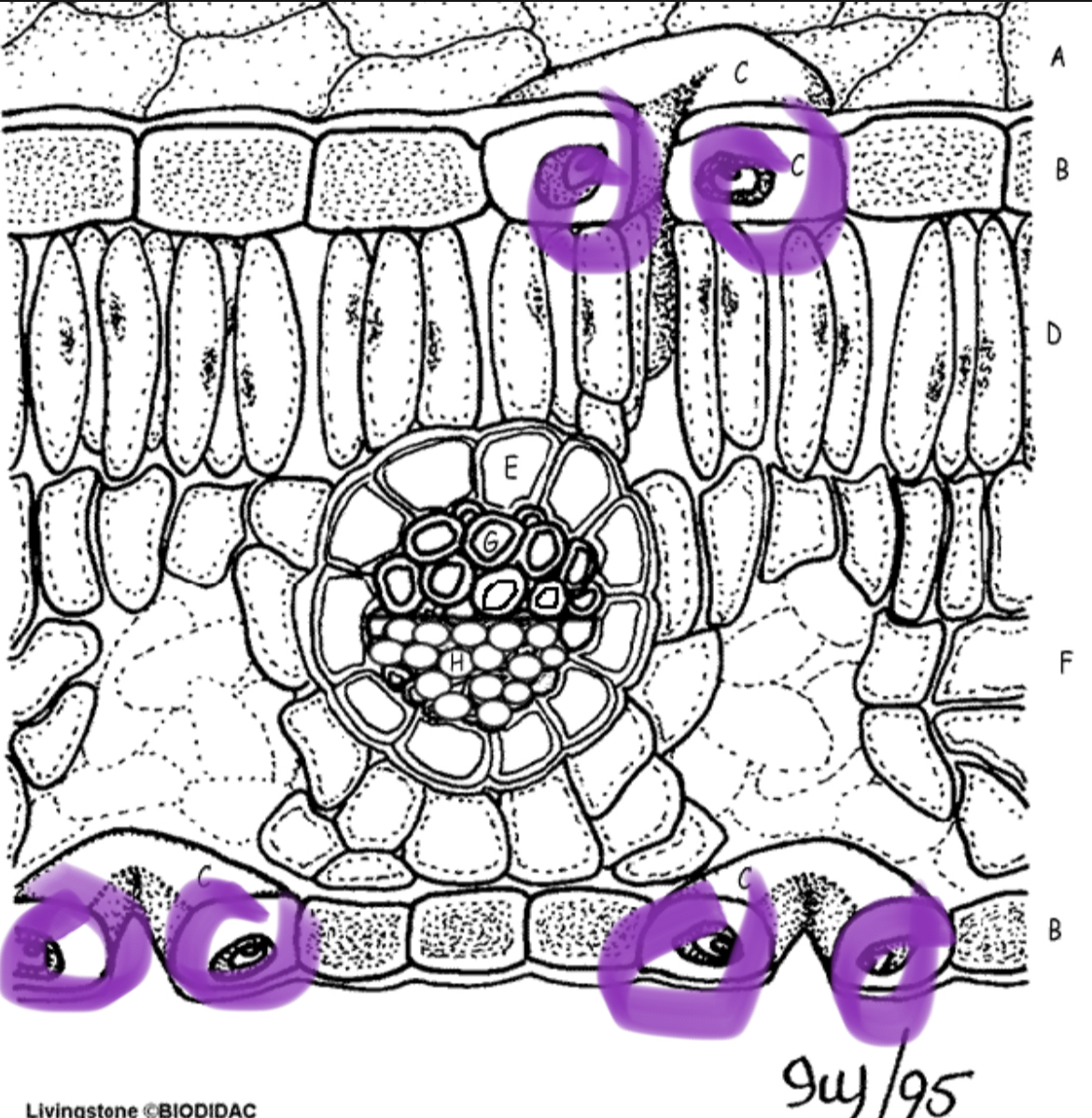
6
New cards
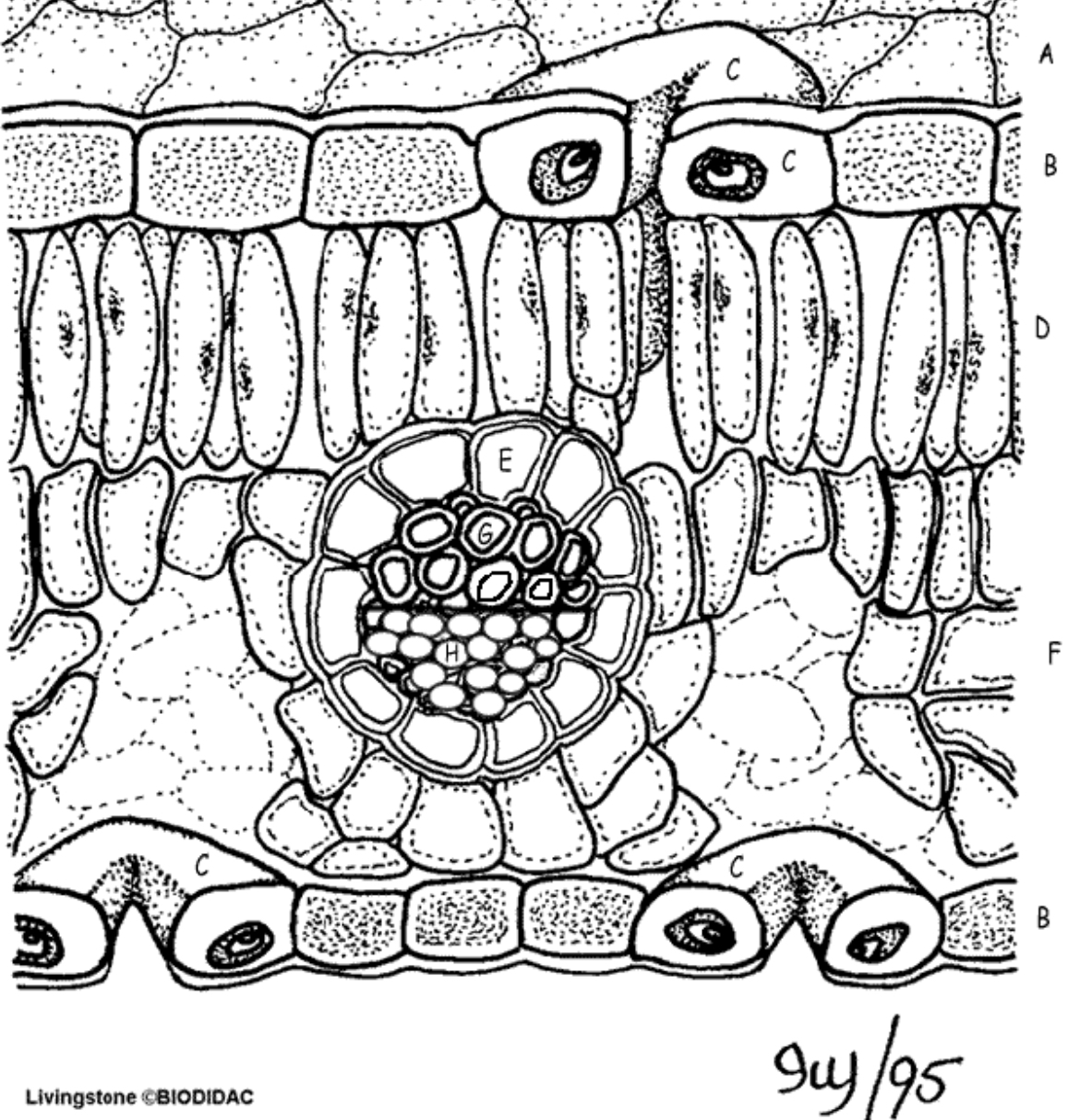
stomada
pore that lets CO2 in and O2 out
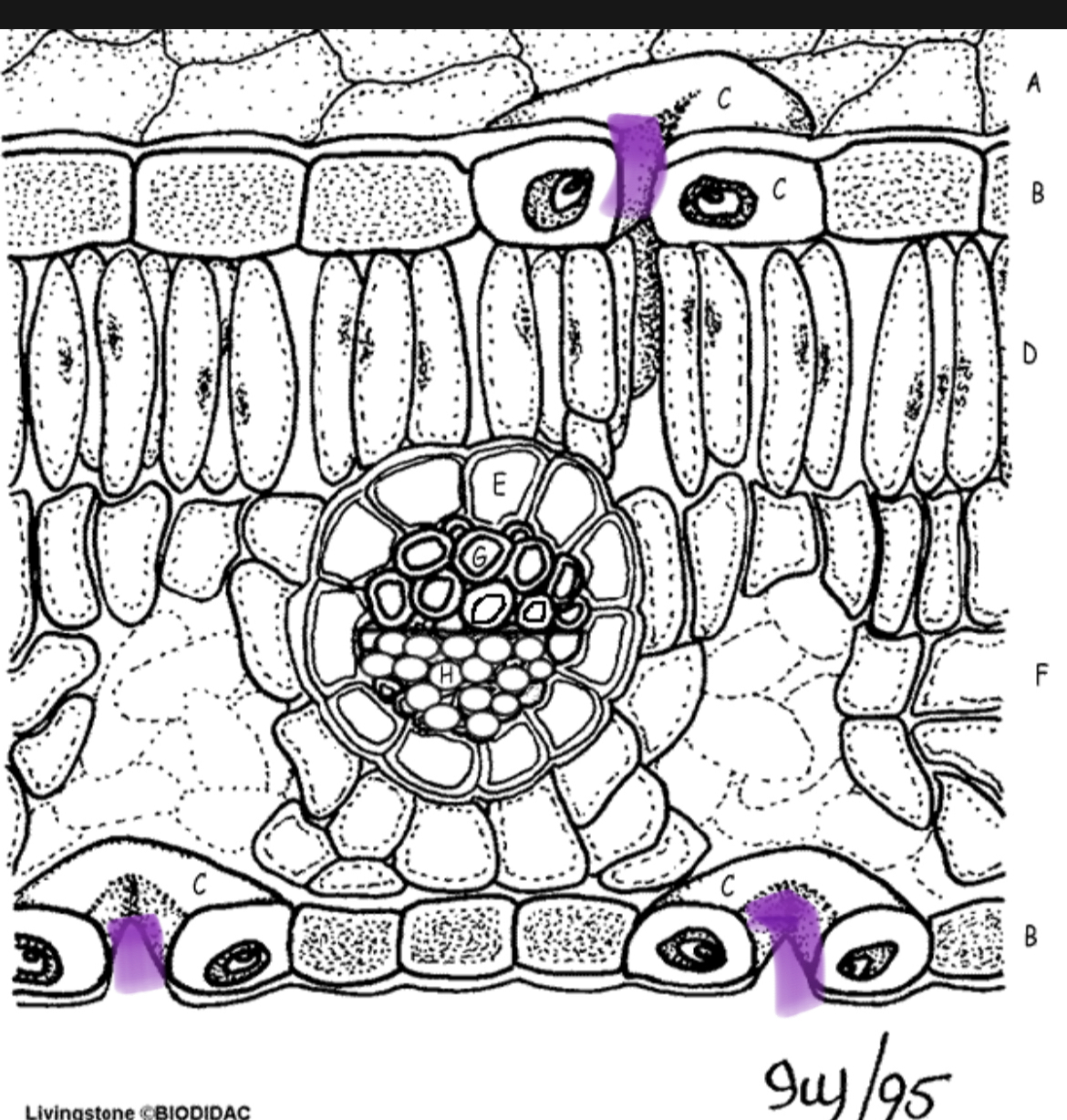
7
New cards
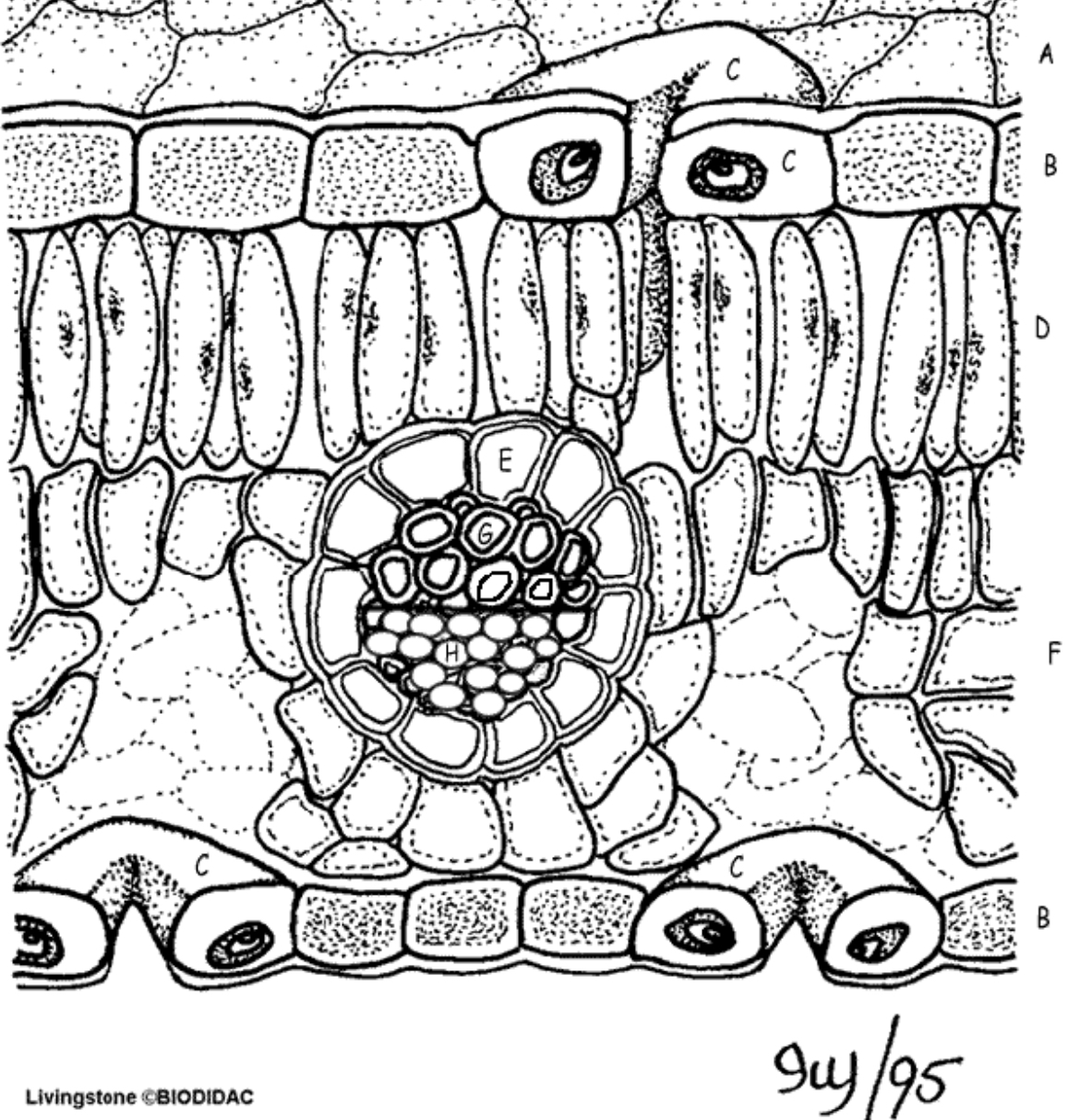
vein
vascular bundle
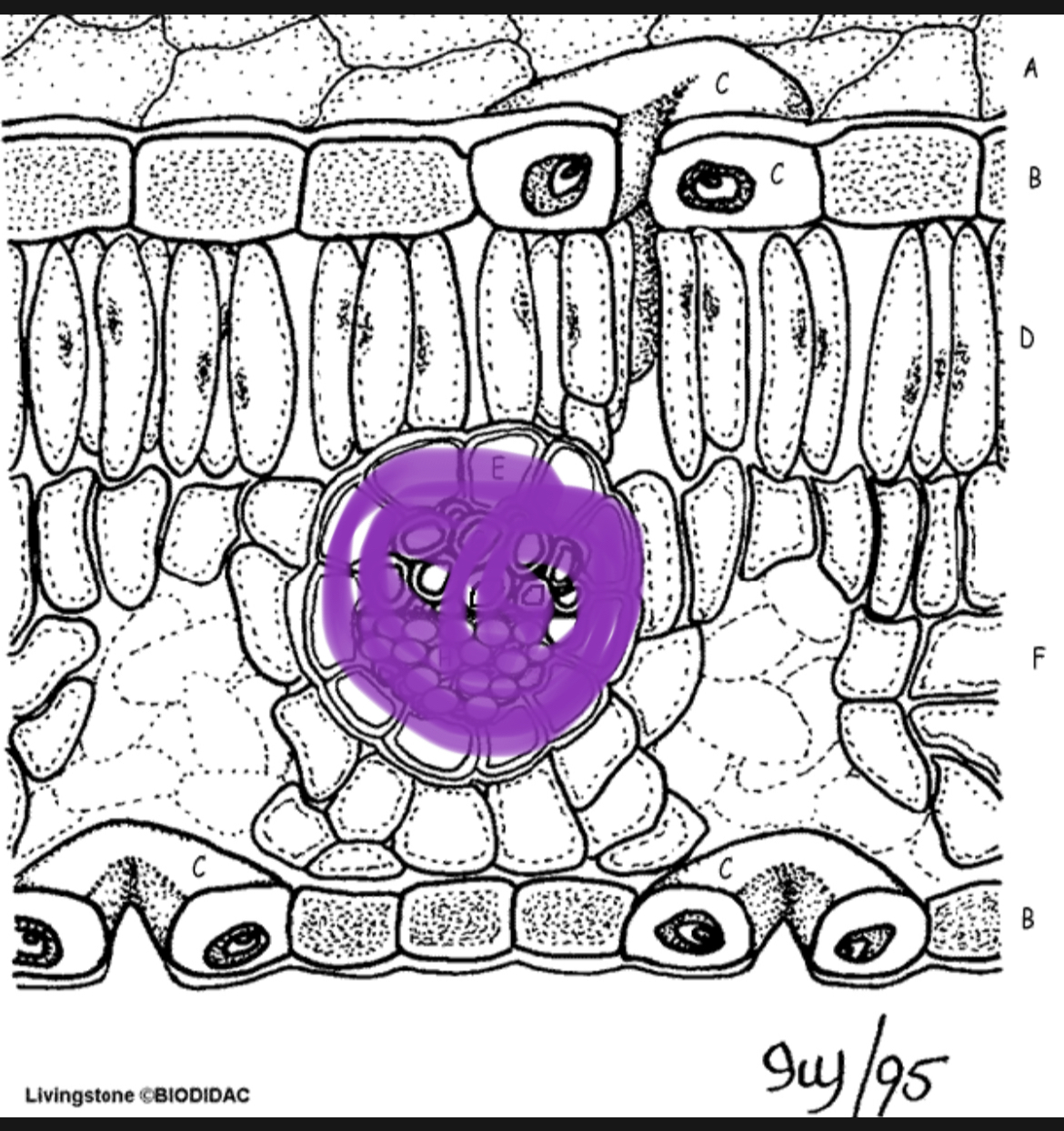
8
New cards
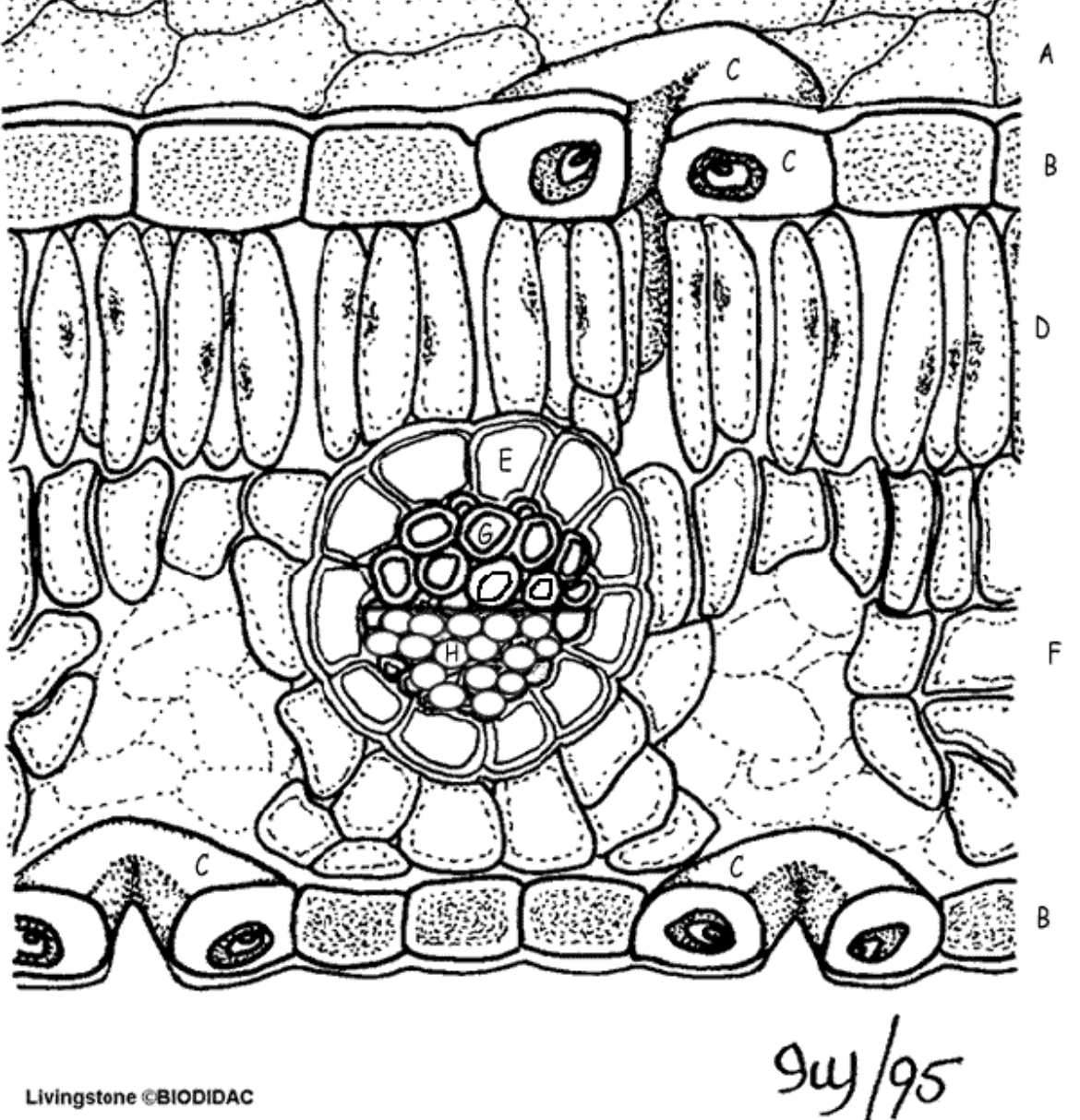
pholem
bottom half of vein, transports sugar (food)
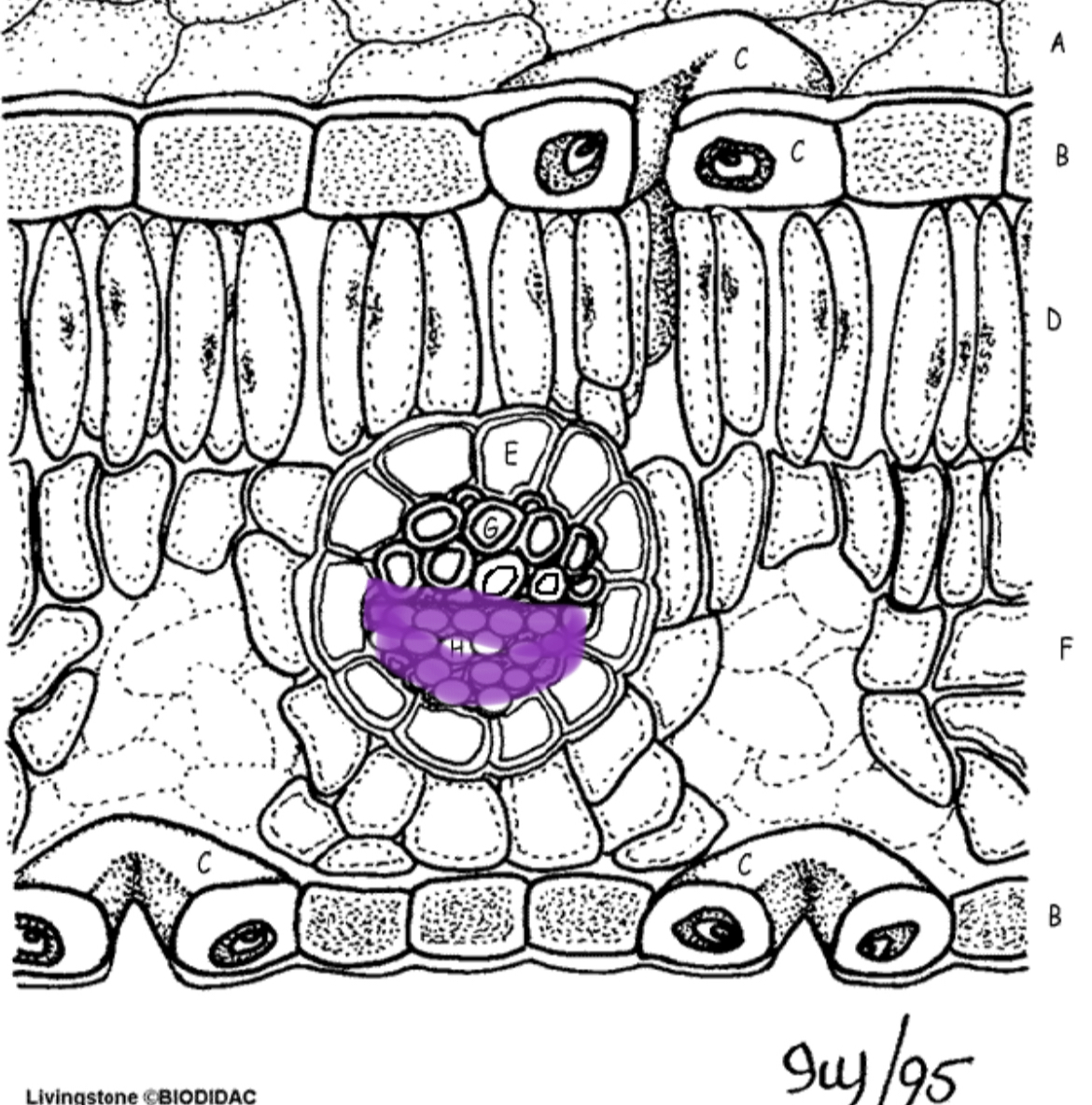
9
New cards
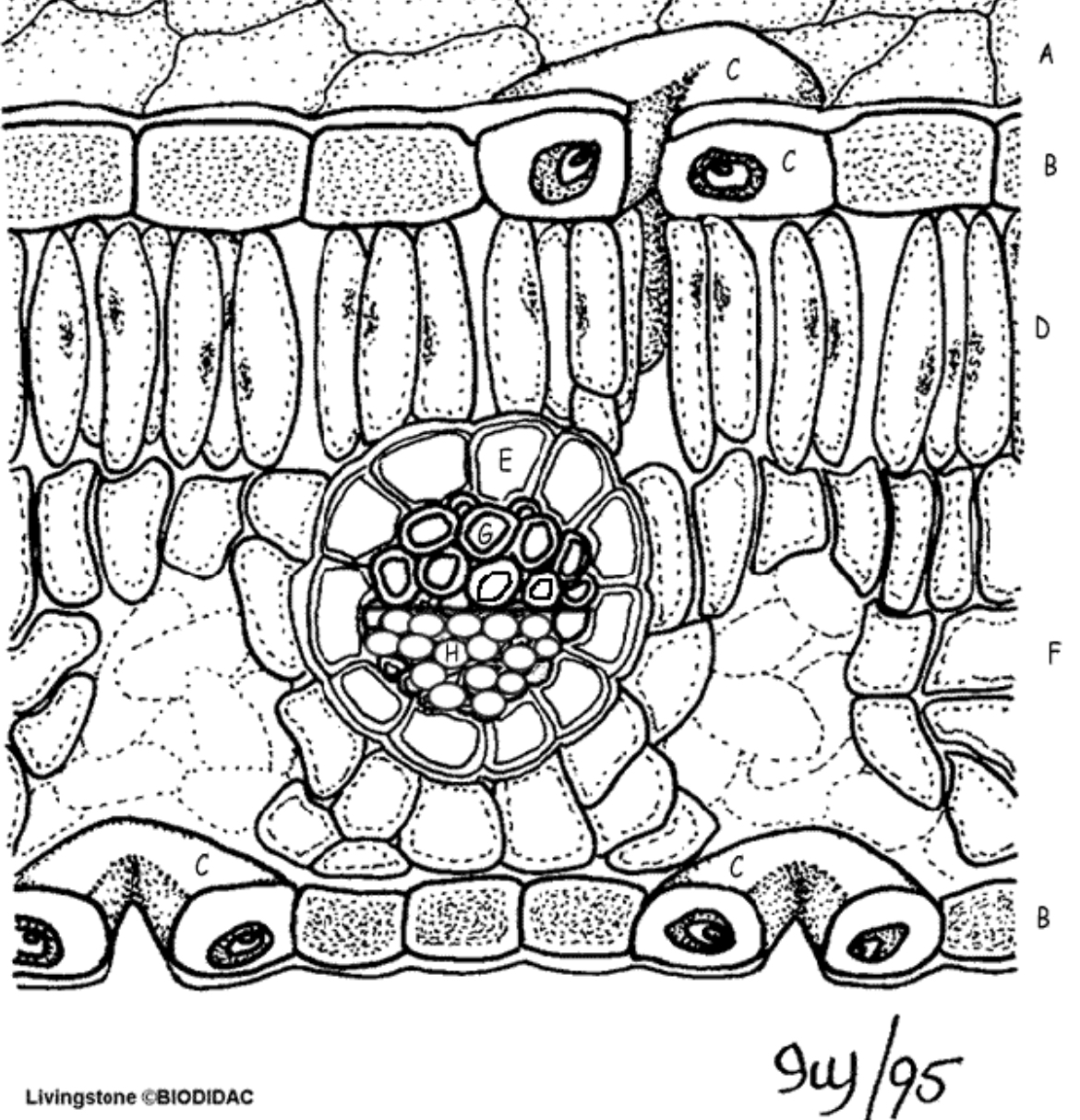
lower epidermis
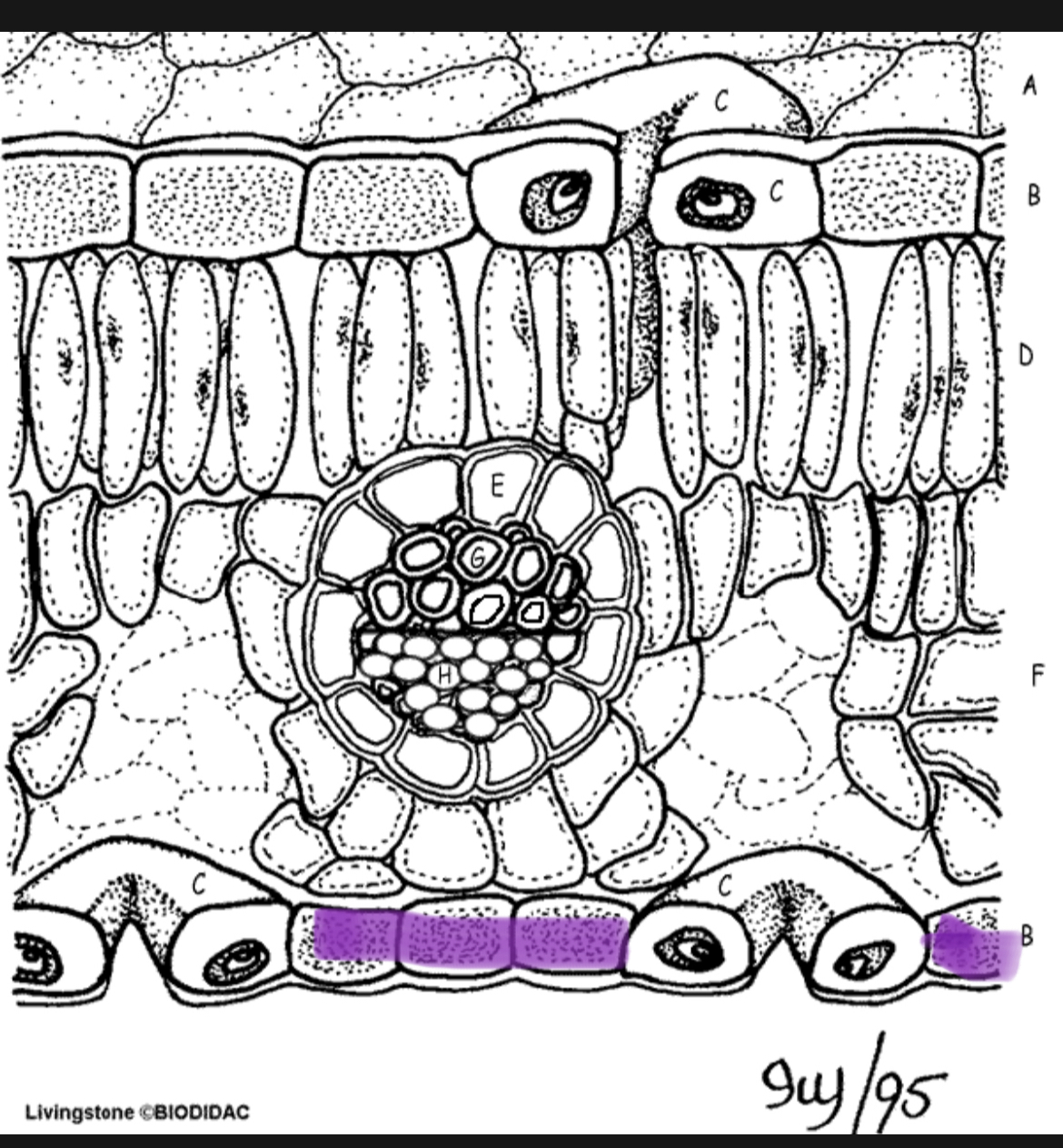
10
New cards
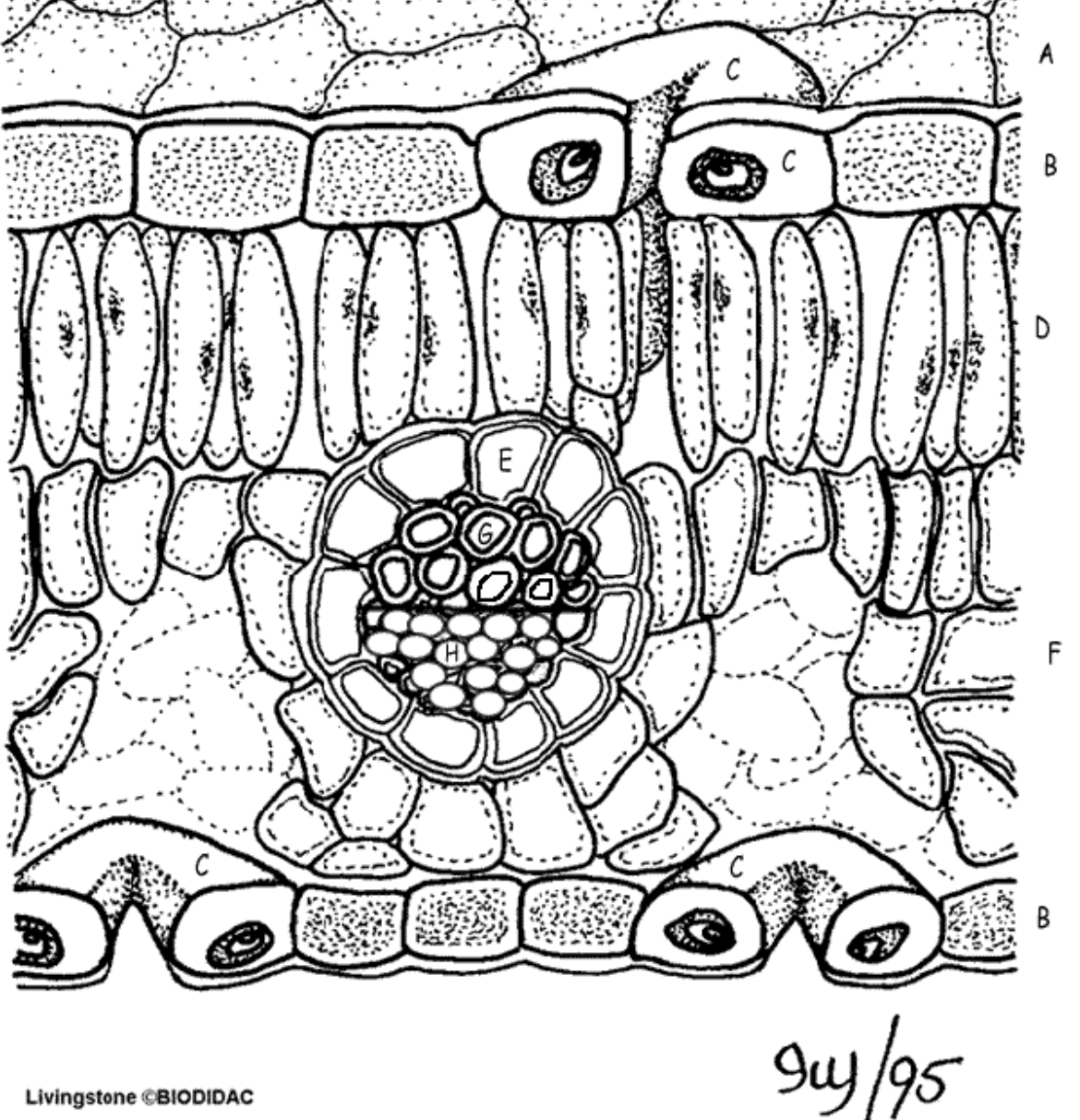
bundle sheath cells
surround the vein
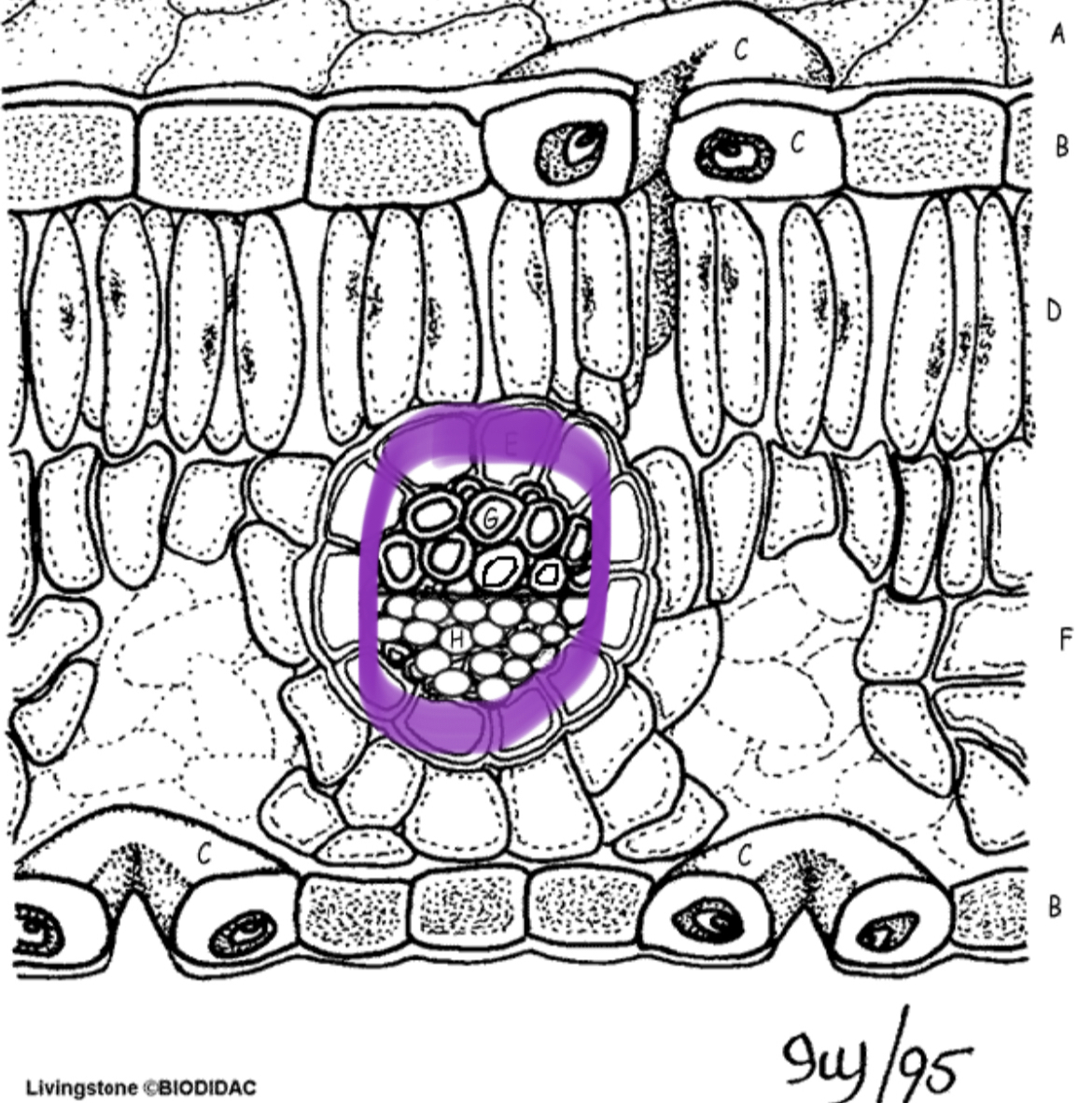
11
New cards
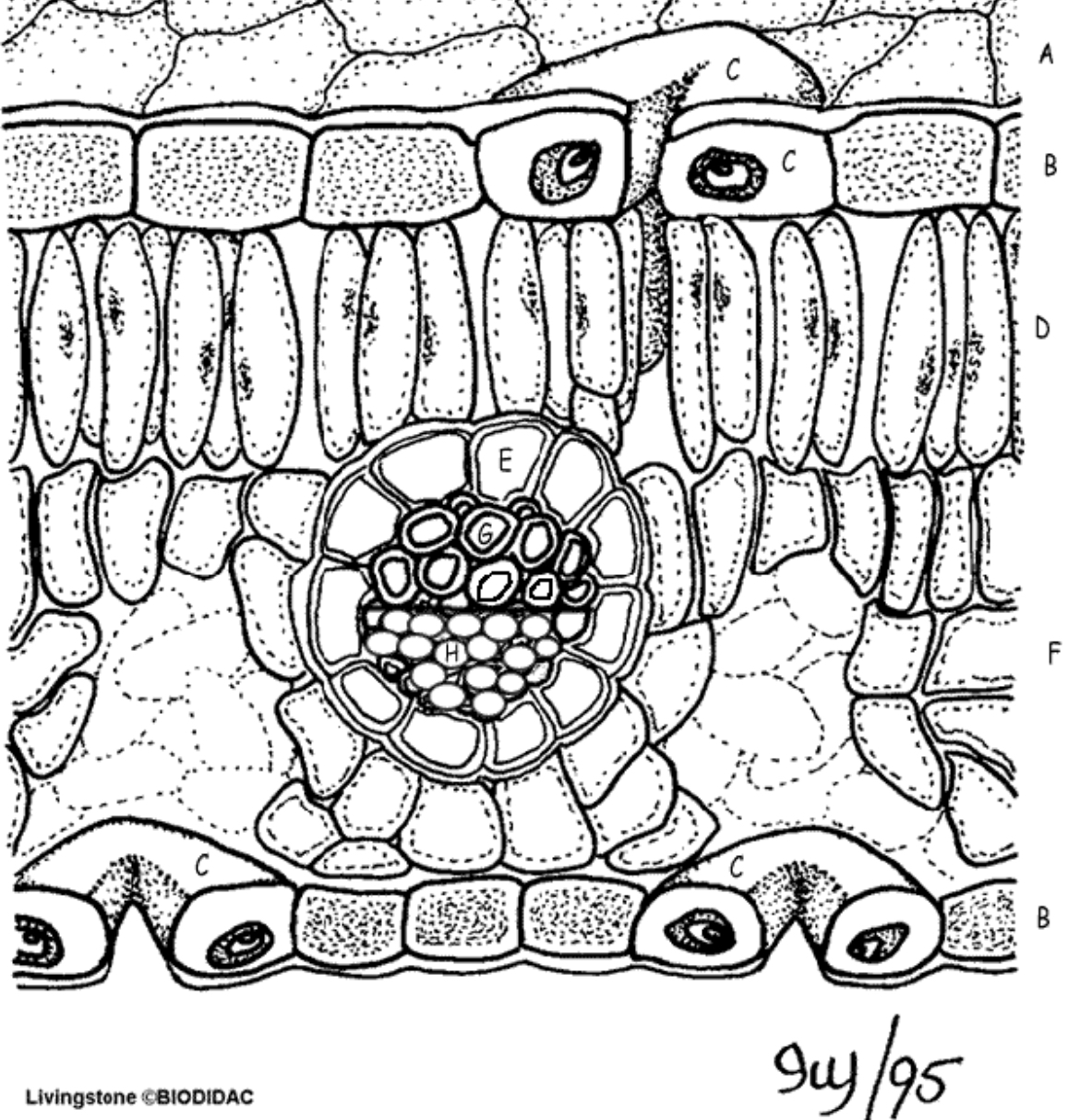
upper epidermis
layer of cells with no chloroplasts, prevents water loss, extra protection
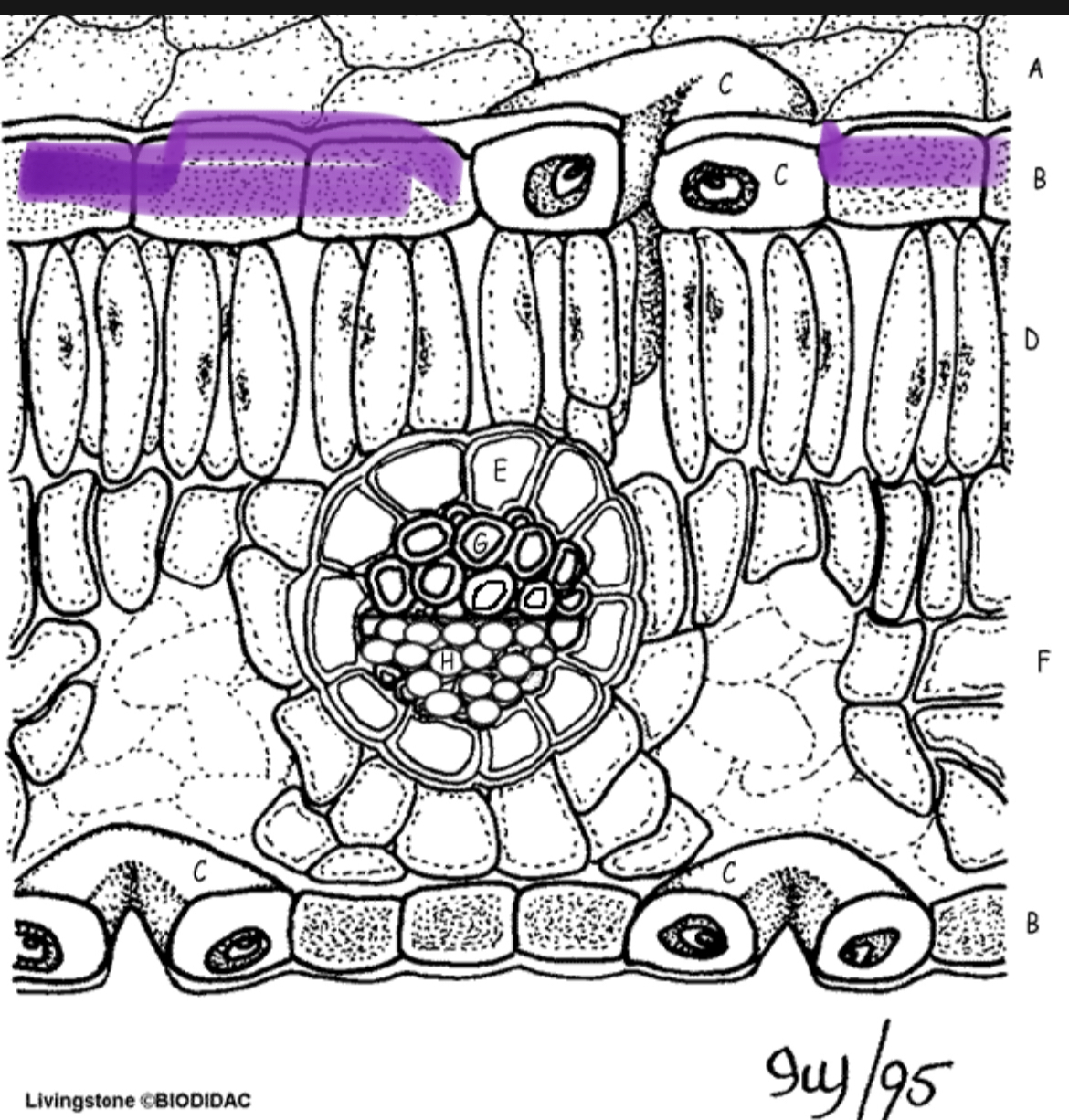
12
New cards
Photosynthesis equation
Sun+6CO2+6H2O ---chlorphyll->C6 H12 06 + 6O2
13
New cards
Pigment
Compound that absorbs light
14
New cards
Chlorophyll A
absorbs mostly red light (MVP)
15
New cards
Chlorophyll B
absorbs more blue light, (helper to A)
16
New cards
Xanthophyll
yellow pigments
17
New cards
Carotene
orange pigments
18
New cards
beta-carotene
red pigments
19
New cards
grana
one section of thylakoid, (one stack of pancakes)
20
New cards
thylakoid membrane
one pancake, contains pigment
21
New cards
stroma cytoplasm
inside chlorplasts
22
New cards
NADPH
electron carrier
-transports electrons from light reaction to Calvin Cycle
-transports electrons from light reaction to Calvin Cycle
23
New cards
Where does light reaction take place?
thylakoid membrane
24
New cards
Steps of light reaction
1. Light reaction starts by absorbing light (chlorophyll A)
2. Light excites the electrons in PSII
3.electrons are transferred molecule by molecule down the ETC
4.Light excites the electrons in PSI
5.PSI passes electrons down the 2nd ETC
2. Light excites the electrons in PSII
3.electrons are transferred molecule by molecule down the ETC
4.Light excites the electrons in PSI
5.PSI passes electrons down the 2nd ETC
25
New cards
Where do the replacement electrons come from?
H20
26
New cards
What is the 2H2O split into?
4H + 4e- +O2
27
New cards
What is the biproduct of the water that is split?
O2
28
New cards
Chemiosis
movement of the H+ from inside the thylakoid membrane to the stroma.
29
New cards
What does Calvin Cycle need to run?
Energy from ATP and electrons from NADPH
30
New cards
Parts of Calvin Cycle
1. Carbon Fixation
2. Reduction
3. Regeneration
2. Reduction
3. Regeneration
31
New cards
Carbon Fixation
-CO2 fuses with RuBP
-Rubisco enzyme fuses two together to form a 6 carbon intermediate
-Breaks in half and forms 2 pga
-Rubisco enzyme fuses two together to form a 6 carbon intermediate
-Breaks in half and forms 2 pga
32
New cards
Reduction
-Gaining electrons
-Pga gets "dressed up" each pga gets ~p (high energy phosphate) from ATP and a e- from NADPH
-Creates G3P
-ADP and NADP+ go back to light reaction
-Pga gets "dressed up" each pga gets ~p (high energy phosphate) from ATP and a e- from NADPH
-Creates G3P
-ADP and NADP+ go back to light reaction
33
New cards
Regeneration
-Recycle
- most G3P stay in the cycle-converted back into RuBP
- most G3P stay in the cycle-converted back into RuBP
34
New cards
What does 1 spin of the cycle use?
-1 Co2
-2 NADPH
-3 ATP
-2 NADPH
-3 ATP
35
New cards
How many turns release G3P?
3 turns
3 Co2
6 NADPH
9 ATP
3 Co2
6 NADPH
9 ATP
36
New cards
How many turns create glucose?
2 G3P or 6 spins
6 Co2
12 NADPH
18 ATP
6 Co2
12 NADPH
18 ATP
37
New cards
Endergonic
Needs energy, energy must go in
-photosynthesis
-photosynthesis
38
New cards
Exergonic
Releases energy, energy exits
-Cellular respiration
- Calvin Cycle
-Cellular respiration
- Calvin Cycle
39
New cards
Anaerobic
-Without oxygen
-less steps
-faster
-Only has a yield of 2 ATP
-takes place in cytoplasm
-less steps
-faster
-Only has a yield of 2 ATP
-takes place in cytoplasm
40
New cards
Aerobic
-With oxygen
-more steps
-creates 38 ATP
-more steps
-creates 38 ATP
41
New cards
Anaerobic respiration equation
C6H12O6 + 2ATP --> 2 pyruvic acid + 4ATP --> 2 lactic acid or ethyl alcohol + CO2
42
New cards
Aerobic respiration equation
C6H12O6 + 6O2 --> 6H20 + 6CO2 + 38ATP
43
New cards
Glycolysis
-Biochemical pathway
-Net Yield 2 ATP
-Net Yield 2 ATP
44
New cards
Lactic Acid Fermentation
-Humans and bacteria
-changes pyruvic acid into lactic acid
-changes pyruvic acid into lactic acid
45
New cards
What foods use lactic acid fermentation?
Cheese and yogurt
46
New cards
Alcohol Fermentation
-in plants and yeast
-changes pyruvic acid into ethyl alcohol + Co2
-changes pyruvic acid into ethyl alcohol + Co2
47
New cards
What foods do Alcoholic Fermentation help create?
Wine, beer, vodka and bread
48
New cards
Parts of Aerobic Respiration
-Glycolysis
-Krebs Cycle
-Electron Transport Chain
-Krebs Cycle
-Electron Transport Chain
49
New cards
What does the pyruvic acid do in Aerobic Respiration?
Combines with CoEnzymeA to form AcetylCoA, it then enters the mitochondria
50
New cards
Krebs Cycle
-Citric acid
-In matrix
-5 steps
-Co2 and electrons are given off
-In matrix
-5 steps
-Co2 and electrons are given off
51
New cards
ETC of Respiration
-Along cristae
-builds up another concentration gradient
-genarates 34 ATP (ATP synthase)
-gives of H20
-builds up another concentration gradient
-genarates 34 ATP (ATP synthase)
-gives of H20
52
New cards
Electron carriers of Aerobic Respiration
NADH and FADH2
53
New cards
Final electron acceptor of ETC
O2
54
New cards
When does oxygen become important during cellular respiration?
During ETC
55
New cards
For every molecule of glucose in aerobic respiration, how many ATP are produced?
2 ATP
56
New cards
Which of the following is not one of the main factors that affect photosynthesis?
-Light Intensity
-O2 concentration
-temperature
-Co2 concentration
-Light Intensity
-O2 concentration
-temperature
-Co2 concentration
O2 concentration
57
New cards